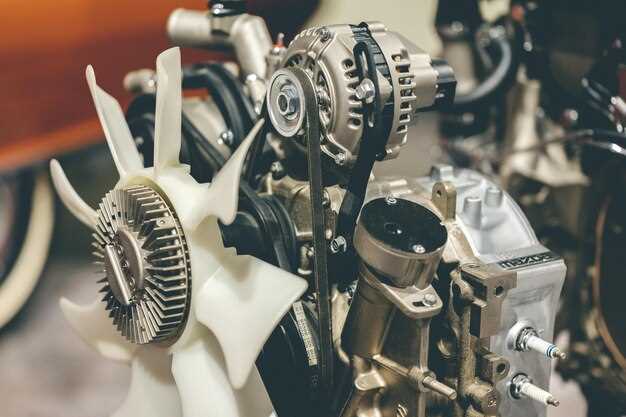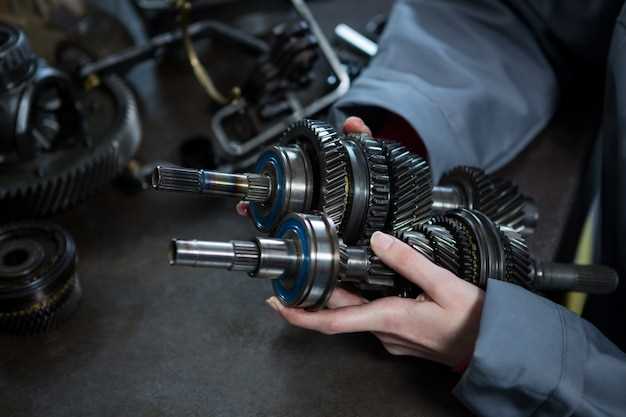
How turbochargers work and how to maintain them

A turbocharger is a vital component that significantly enhances the performance of an engine by forcing extra air into the combustion chamber. This process allows for a more efficient burn of fuel, resulting in increased power output without a corresponding increase in engine size. Modern vehicles commonly utilize turbo systems to maximize efficiency and performance, making it essential for car enthusiasts and everyday drivers alike to understand how these components function and the best practices for their upkeep.
Maintaining a turbocharger is crucial for ensuring long-term reliability and optimal performance. Regular maintenance not only extends the lifespan of the turbo but also maximizes the benefits it provides. Over time, neglect can lead to issues such as oil leaks, reduced efficiency, and even catastrophic failure of the turbo unit. By following some straightforward maintenance tips, drivers can help avoid common pitfalls and keep their turbocharged engines running smoothly.
In this article, we will delve into the workings of turbochargers, exploring how they operate and the benefits they bring to vehicles. We will also provide essential maintenance tips that every car owner with a turbocharged engine should know. Understanding these aspects is key to ensuring a durable and high-performing vehicle.
How Turbochargers Work to Enhance Engine Performance

A turbocharger, often referred to simply as a turbo, is a forced induction device designed to increase an engine’s efficiency and power output by forcing more air into the combustion chamber. This process involves the use of a turbine and a compressor, both of which are connected by a shaft. When exhaust gases exit the engine, they spin the turbine, which in turn drives the compressor to draw in more air and compress it before it enters the engine.
The key benefit of a turbocharger is its ability to boost the engine’s performance without significantly increasing its size. By enhancing the air supply, the turbo allows for more fuel to be burned during each cycle, leading to a greater power output. This increased air-fuel mixture not only improves performance but also enhances fuel efficiency, making it an attractive option for both performance enthusiasts and everyday drivers.
As the engine operates, the turbocharger utilizes the heat and pressure from exhaust gases, reclaiming energy that would otherwise be wasted. This reclaimed energy creates a positive pressure in the intake manifold, effectively filling the cylinders with additional air. The result is a quicker throttle response, improved acceleration, and overall enhanced engine performance.
In addition to providing a power boost, turbochargers also enable smaller engines to generate power levels typically found in larger displacement engines. This downsizing trend is prevalent in modern automotive design, where manufacturers aim to meet stringent fuel economy and emissions regulations while maintaining high performance.
However, the effectiveness of a turbo also depends on various factors such as engine tuning, intercooling, and exhaust system design. Optimizing these components can significantly amplify the benefits of a turbocharger, maximizing its potential to enhance the engine’s capabilities.
Identifying Common Turbocharger Issues and Their Solutions

Turbochargers play a crucial role in enhancing engine performance by increasing air intake and boost pressure. However, they can encounter various issues that affect their efficiency and functionality. Identifying these problems early can prevent costly repairs and ensure optimal performance. Here are some common turbocharger issues and their solutions:
-
Boost Leaks:
Boost leaks occur when there is a loss of compressed air within the intake system. This can lead to decreased performance and increased turbo lag.
- Inspect hoses and connections for cracks or loose fittings.
- Use soapy water to identify leaks by applying it to suspected areas while the engine is running.
- Replace or tighten damaged hoses and couplings as necessary.
-
Oil Starvation:
Insufficient oil can lead to turbocharger failure due to overheating and excessive wear on the bearings.
- Ensure regular oil changes with high-quality oil to maintain adequate lubrication.
- Check for oil leaks in the oil lines and connections.
- Inspect the oil filter for clogs that may restrict oil flow.
-
Wastegate Malfunction:
A malfunctioning wastegate can cause over-boost or under-boost conditions, leading to poor engine performance.
- Check the wastegate actuator for proper function.
- Inspect the wastegate for any signs of sticking or damage.
- Test the boost pressure using a gauge to ensure it’s within specifications.
-
Excessive Smoke Emission:
Blue or black smoke from the exhaust may indicate turbocharger problems, such as oil leaks into the intake.
- Examine the turbo seals for wear or damage.
- Inspect the engine for signs of oil contamination.
- Replace faulty seals or the turbocharger if necessary.
Addressing these common turbocharger issues promptly will help maintain boost levels and improve overall engine performance. Regular inspections and maintenance practices can significantly extend the lifespan of your turbocharger, ensuring that it continues to deliver optimal power and efficiency.
Maintenance Practices to Extend Turbocharger Lifespan
To ensure optimal performance and longevity of your turbocharger, it is essential to adopt proper maintenance practices. Regular inspection and servicing can prevent significant issues and prolong the turbo’s life.
Firstly, always use high-quality engine oil that meets the specifications recommended by the manufacturer. Turbochargers rely on proper lubrication, and using substandard oil can lead to premature wear and potential failure. Regular oil changes, based on the manufacturer’s guidelines, will help maintain clean oil circulation within the turbo system.
Secondly, inspect and replace the air filter regularly to ensure adequate airflow to the turbocharger. A clogged or dirty air filter can restrict airflow, causing the turbo to work harder and potentially leading to overheating or damage. Keeping the air intake system clean will promote efficient operation.
Additionally, pay attention to boost pressure. Monitor the boost levels to ensure the turbo is functioning within its designed parameters. If boost pressure is consistently too high or too low, it could indicate underlying issues such as wastegate malfunction or exhaust leaks, which need immediate attention.
After any long drive or extensive use, allow the engine to idle for a few minutes before shutting it down. This practice allows the turbo to cool down gradually, preventing thermal shock that can damage the turbocharger’s components. Never turn off the engine immediately after heavy acceleration or high RPM operation.
Finally, check for any signs of oil leaks around the turbocharger. Oil leakage can indicate problems with seals or gaskets, which, if left unresolved, can lead to catastrophic failure. Early detection and repair of any leaks will safeguard the turbocharger’s integrity.